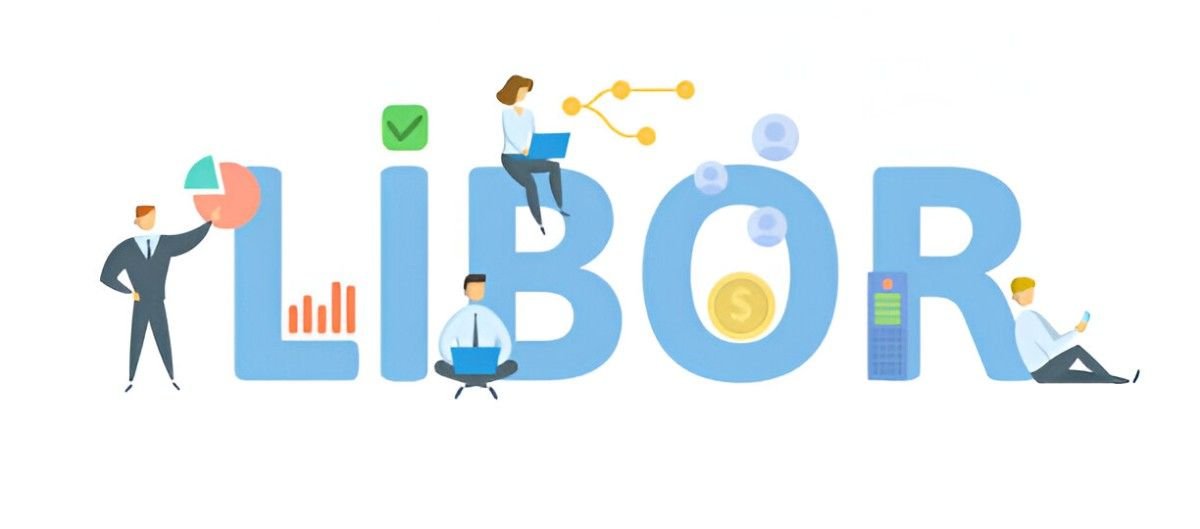Interest rates shape the financial world, influencing everything from mortgage payments to corporate loans. Among the most critical benchmarks, the London Interbank Offered Rate (LIBOR) once stood as the global reference rate. However, after scandals and structural flaws, LIBOR is being phased out. In this guide, I break down what LIBOR was, how it worked, and why it matters—even in its decline.
Table of Contents
What Is LIBOR?
LIBOR was the average interest rate at which major banks could borrow from one another in the London interbank market. It served as a benchmark for over $350 trillion in financial products, including:
- Adjustable-rate mortgages
- Student loans
- Derivatives like interest rate swaps
- Corporate debt
Calculated for five currencies (USD, EUR, GBP, JPY, CHF) and seven maturities (overnight to one year), LIBOR was published daily by the Intercontinental Exchange (ICE).
How Was LIBOR Calculated?
LIBOR relied on submissions from a panel of global banks. Each bank estimated its borrowing cost under the question:
“At what rate could you borrow funds, were you to do so by asking for and then accepting interbank offers in a reasonable market size just prior to 11 am?”
The ICE then trimmed the highest and lowest submissions, averaging the rest. Mathematically, for submissions, the calculation was:
Where:
- = individual bank submissions
- = highest and lowest submissions
Example Calculation
Suppose five banks submitted the following rates for 3-month USD LIBOR:
| Bank | Submission (%) |
|---|---|
| Bank A | 2.50 |
| Bank B | 2.55 |
| Bank C | 2.45 |
| Bank D | 2.60 |
| Bank E | 2.40 |
After excluding the highest (2.60%) and lowest (2.40%), LIBOR would be:
Why LIBOR Collapsed
Despite its dominance, LIBOR had critical flaws:
- Subjective Submissions – Banks estimated rates rather than reporting actual transactions.
- Manipulation Scandals – Traders rigged submissions for profit, leading to $9 billion in fines.
- Declining Interbank Lending – Post-2008, banks relied less on unsecured borrowing, making LIBOR theoretical.
In 2017, UK regulators announced LIBOR’s phase-out, with most settings ceasing after June 30, 2023.
LIBOR vs. SOFR: The Replacement
The Secured Overnight Financing Rate (SOFR) is LIBOR’s US successor. Unlike LIBOR, SOFR is:
- Transaction-Based – Derived from actual repo market trades.
- Overnight-Only – No term structure (though forward-looking versions exist).
- Collateralized – Reflects secured lending, not unsecured interbank loans.
Key Differences
| Feature | LIBOR | SOFR |
|---|---|---|
| Basis | Bank estimates | Actual transactions |
| Risk | Includes credit risk | Nearly risk-free |
| Tenors | Multiple maturities | Primarily overnight |
Implications for Borrowers and Investors
The shift from LIBOR affects:
1. Adjustable-Rate Mortgages (ARMs)
Many ARMs tied to LIBOR switched to SOFR plus an adjustment spread. For example:
- Old rate: LIBOR + 2.5%
- New rate: SOFR + 2.6% (adjustment for historical differences)
2. Derivatives Market
Interest rate swaps referencing LIBOR had to transition. The ISDA Fallbacks Protocol automatically converted legacy contracts to SOFR.
3. Corporate Loans
Loans now use SOFR or other alternatives like Ameribor (for smaller banks).
The Math Behind Transition Adjustments
To ensure fairness, regulators added a Credit Adjustment Spread (CAS) to SOFR. The formula accounts for the historical spread between LIBOR and SOFR:
For 3-month USD LIBOR, the CAS was 0.261% (26.1 bps).
Example: Converting a LIBOR Loan to SOFR
Suppose a $1 million business loan had a rate of LIBOR + 3%. Post-transition:
If SOFR is 4.5%, the revised rate becomes:
Lessons from LIBOR’s Legacy
- Transparency Matters – Trust in benchmarks requires real data, not estimates.
- Regulatory Oversight is Crucial – Weak governance enabled manipulation.
- Markets Evolve – SOFR isn’t perfect but reflects modern finance better.
Final Thoughts
LIBOR’s rise and fall teach us how financial systems must adapt. While SOFR addresses many flaws, challenges remain—like the lack of term rates. For now, understanding these benchmarks helps borrowers, investors, and policymakers navigate the transition smoothly.





